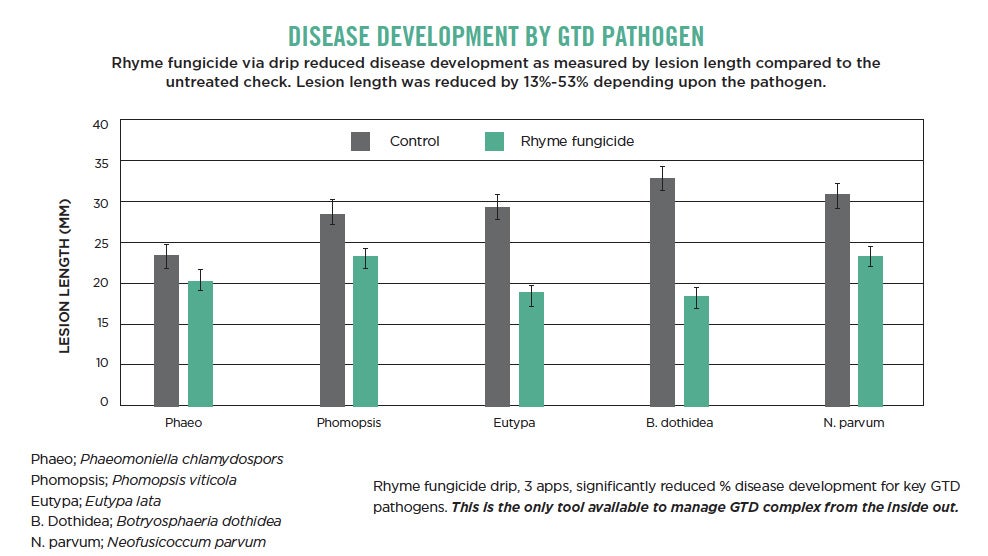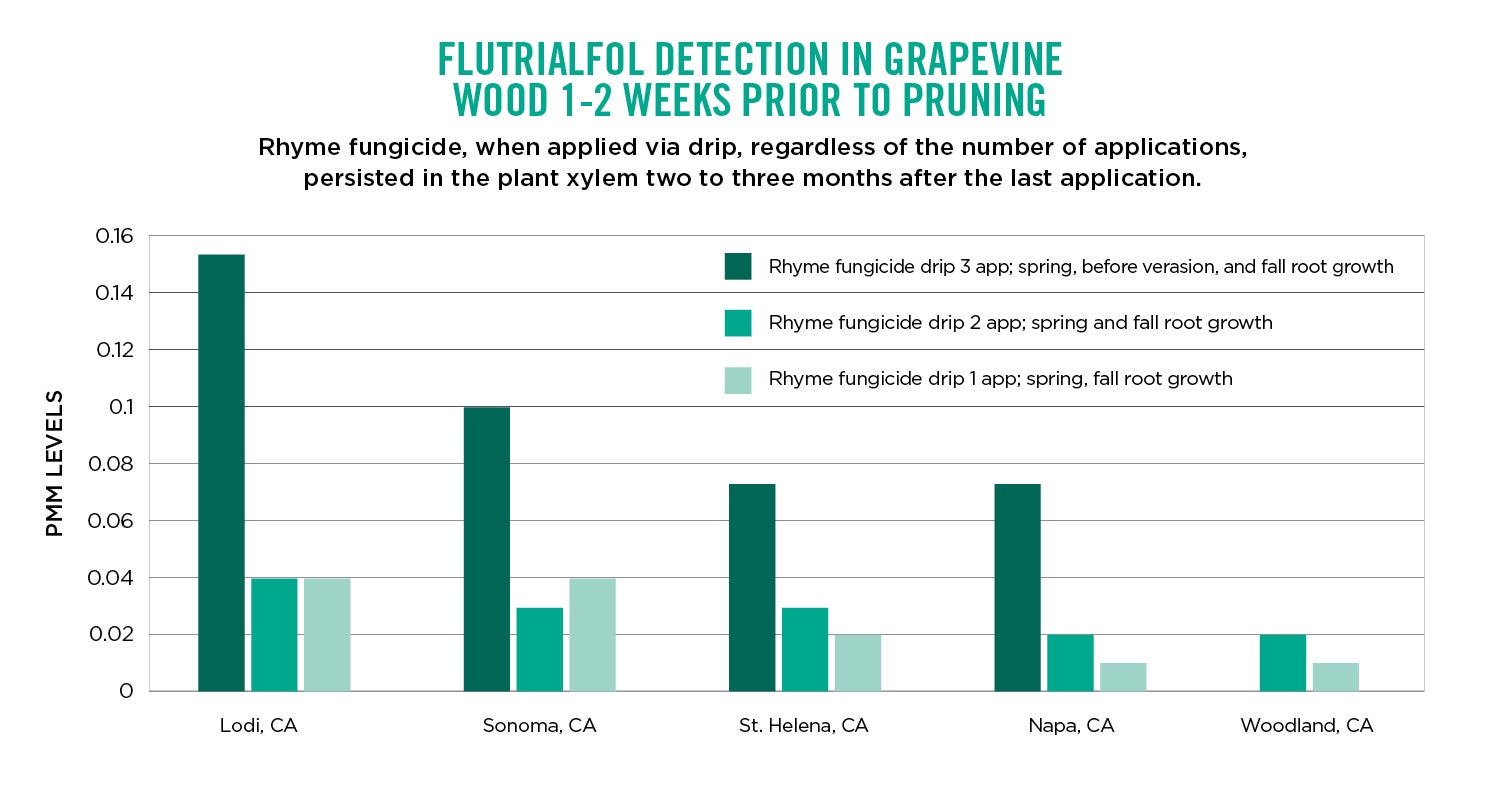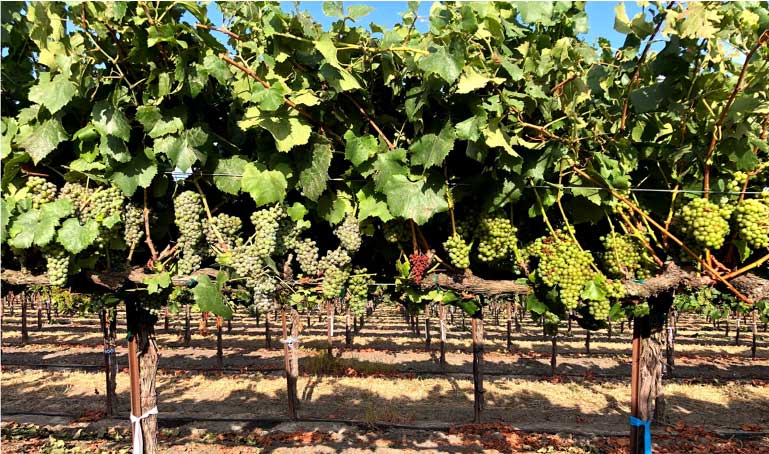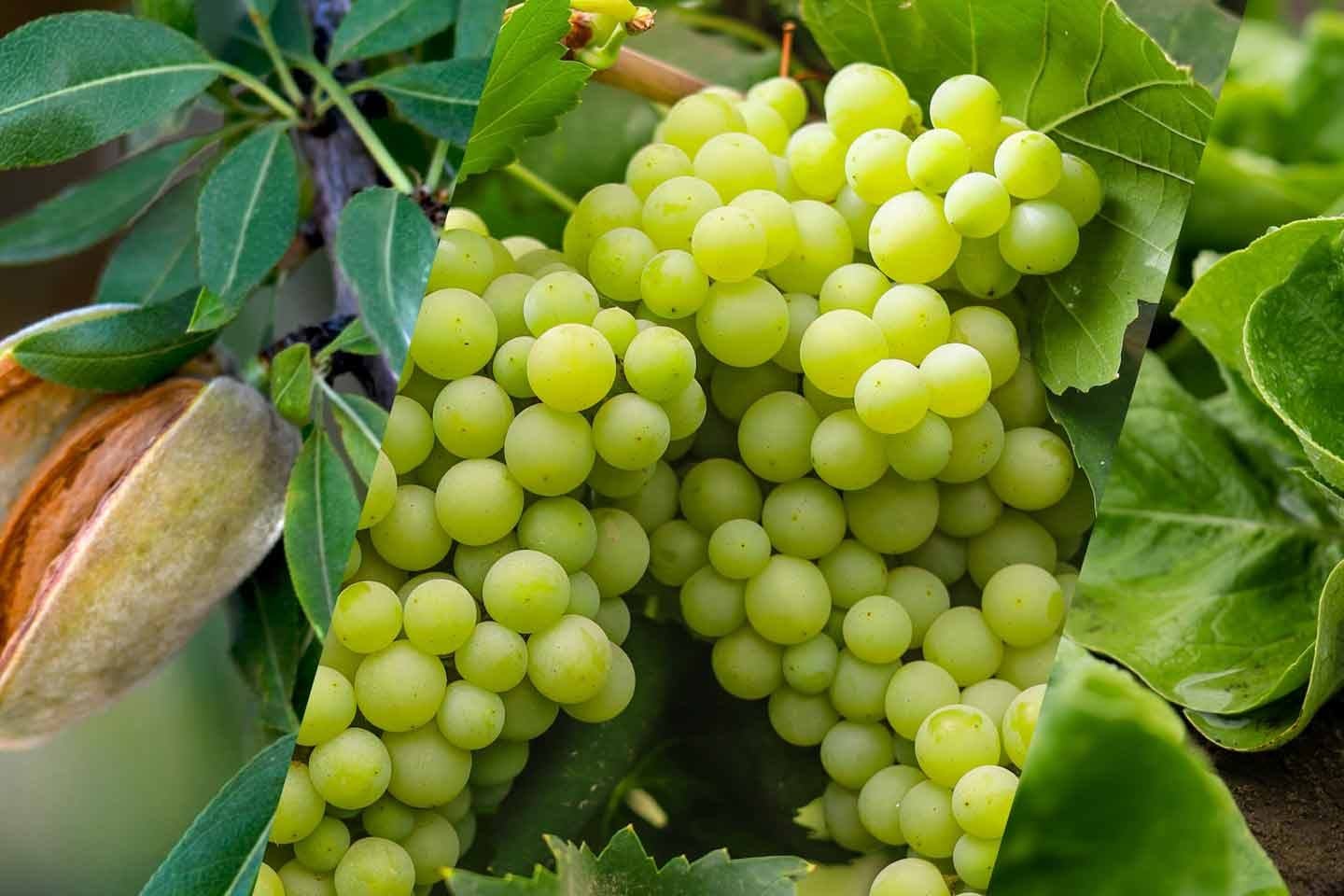Powdery mildew fungicide provides dual protection when applied by drip
Rhyme® fungicide is the only fungicide labeled for application through drip irrigation to control two of the costliest diseases of grapes: powdery mildew and grapevine trunk diseases (GTDs). New data from the University of California is showing the consistent performance of Rhyme fungicide via drip on a broad spectrum of GTD pathogens that progressively ravage the productivity of vineyards. It’s not uncommon for GTDs to cause a 20% yield loss in 10-year-old vineyards and 70% loss by year 15.
Research by plant pathologist Dr. Florent Trouillas at the Kearney Agricultural Research and Extension Center in Parlier, CA, has documented the activity of Rhyme fungicide drip applications against multiple GTD pathogens. In the 2020 vineyard study, Rhyme fungicide reduced infection from five pathogens: Eutypa lata (E. lata), Neofusicoccum parvum (N. parvum), Phomopsis viticola (Phomopsis), Botryosphaeria dothidea (B. dothidea) and Phaeomoniella chlamydospora (Phaeo), as shown on the figure below.

The new study affirms the 2019 UC-Davis research by plant pathologist Dr. Akif Eskalen that found drip applications of Rhyme fungicide applied during spring root flush, before veraison and after harvest, during the fall root flush, significantly reduced the mean percent infection rate for two of the most common and aggressive GTD pathogens, E. lata and N. parvum compared to the untreated check. In addition, Rhyme fungicide via drip performed as well or better than the standard spray treatment of Rally® fungicide plus Topsin® M fungicide with organosilicone following pruning.
HIGH MOBILITY AND PERSISTENCE IN THE VINE
When applied via drip, flutriafol, the active ingredient in Rhyme fungicide, is taken up by the roots and moves upward through the plant’s xylem to protect the trunk, cordons, canes, leaves and new growth. The capability to move from the soil upward through the plant to provide both internal and foliar disease control through the growing season is unique to flutriafol due to its high mobility and persistence.
In 2020, FMC took tissue samples from vineyards in Lodi, Sonoma, St. Helena, Woodland and Napa that had received one, two or three drip applications of Rhyme fungicide in order to measure the persistence of its active ingredient in the wood. Samples were taken one to two weeks prior to pruning from the cordons and canes of 1- to 3-year-old wood and were tested by Golden Pacific Lab in Fresno. In all locations and regardless of the number of applications, flutriafol was detected in the xylem tissue just before pruning, months after the last drip application (see figure below).

“The data showed Rhyme fungicide lasts two to three months after application and is immediately available in the plant’s xylem to protect the vine following pruning, when it is most vulnerable to infection,” says Issa Qandah, FMC technical service manager in California. “The inside-out residual protection of Rhyme fungicide via drip provides significant savings by eliminating application costs for wound protectants.”
DISCOVER A MORE AFFORDABLE AND EFFICIENT WAY TO PROTECT YOUR VINES
“We were looking for powdery mildew solutions that would save our growers some operational dollars and help them come in at the budget that is being asked of them,” explains Nathan Miller, branch manager, Helena Agri-Enterprises, Santa Maria, CA. “The advantage of Rhyme fungicide is that it performs fabulously on powdery mildew and, unlike other products, it can be chemigated. One irrigator can cover way more acres than one person spraying.”
Miller has been using Rhyme fungicide via drip with vineyard managers to control powdery mildew for the past three years, and it fits many growers’ operations.
In established vineyards in the Southern Coast, Miller recommends chemigation of Rhyme fungicide with a pre-bloom fertilizer, typically at the third or fourth spray, to control powdery mildew. “Vineyards have irrigators that are already pushing fertilizer and irrigating. Applying Rhyme fungicide via chemigation eliminates a spray application enabling workers to focus on other jobs in the vineyard for 10-14 days, during a very pressured time of year,” he explains.
For young vineyards, he recommends Rhyme fungicide via drip for the last powdery mildew application of the season. “This is appealing to vineyard managers because they already have a person in the field irrigating young plants, and they don’t have to peel a tractor driver off critical spray applications in productive vineyards,” says Miller.
“Rhyme fungicide delivers excellent powdery mildew control and growers save on labor and equipment.” Miller is following the research showing Rhyme fungicide’s activity on GTDs with strong interest since it would provide even more benefits to vineyard managers.

This Rhyme fungicide recommendation is made as permitted under FIFRA Section 2(ee) for the management of wood disease complex on grapes in California. This recommendation has not been submitted to or approved by the EPA. The 2(ee) expiration date is 12/05/2024.
Always read and follow all label directions, precautions and restrictions for use. Some products may not be registered for sale or use in all states. FMC, the FMC logo and Rhyme are trademarks of FMC Corporation or an affiliate. Rally is a trademark DuPont, Dow AgroSciences or Pioneer and their affiliated companies or their respective owners. Topsin is a trademark of Nippon Soda Company, Ltd. ©2021 FMC Corporation. All rights reserved. 21-FMC-1970 01/21



